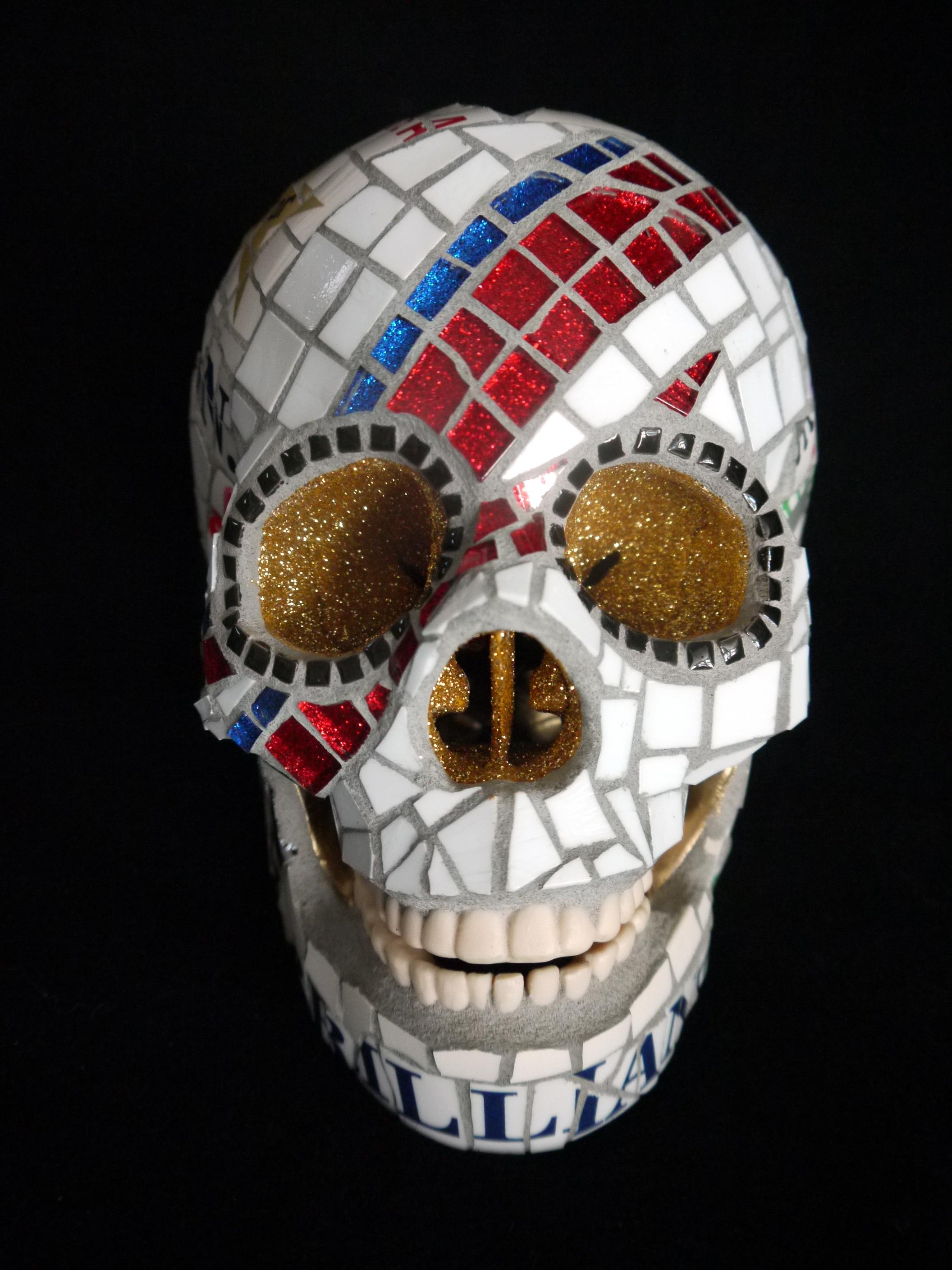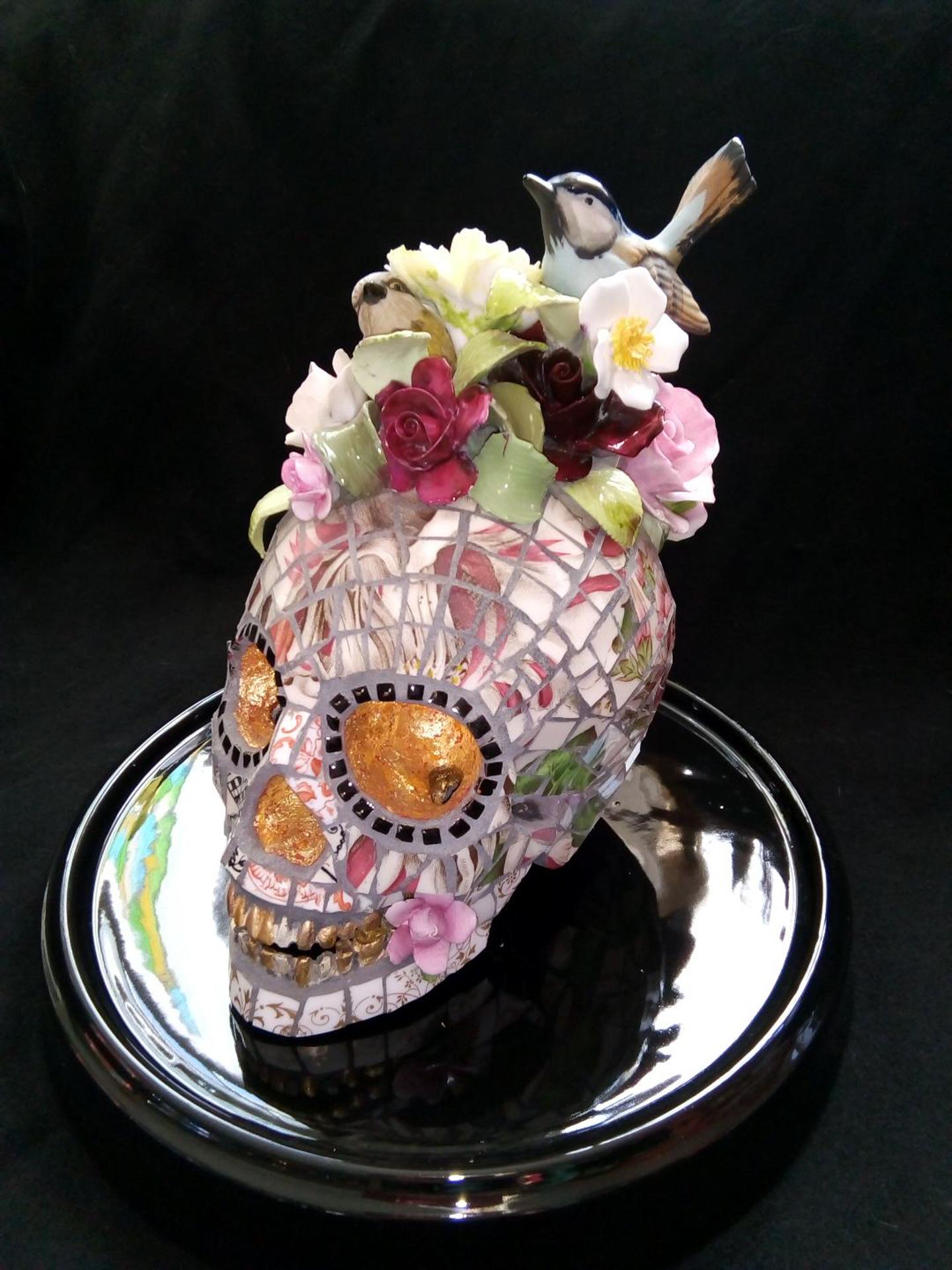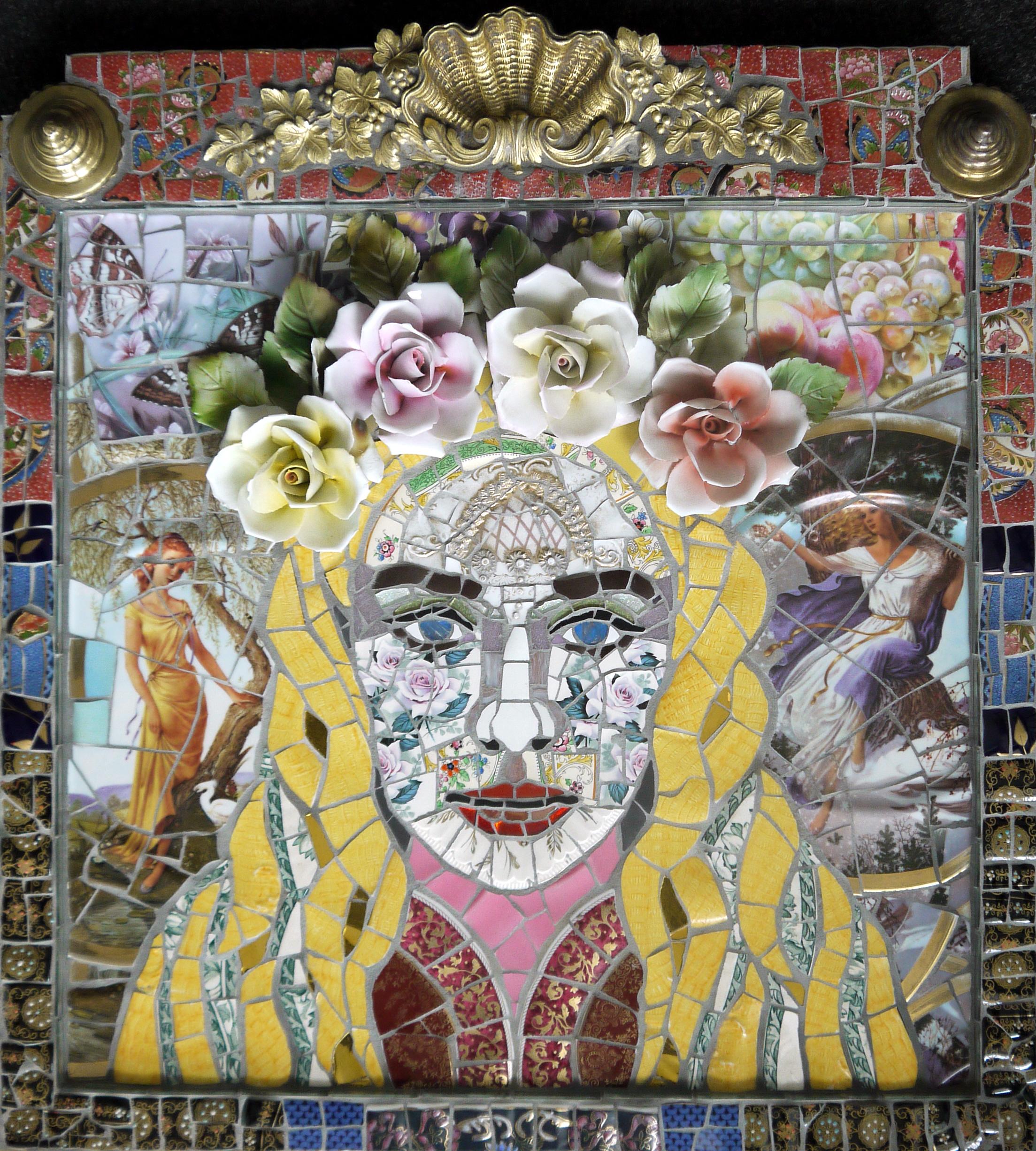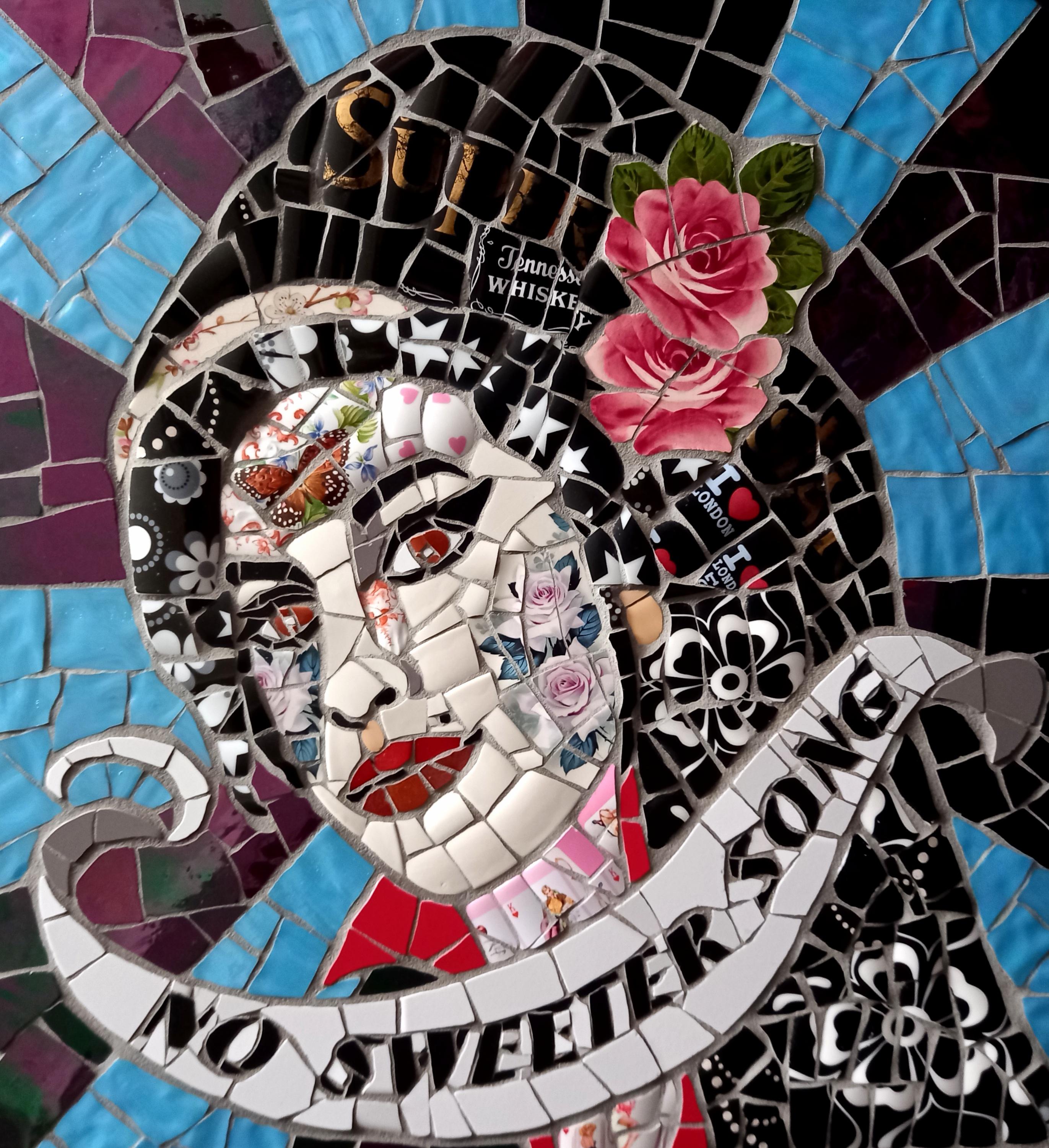Items Similar to Veracruz Mexico Pre-Columbian ceramic Warrior figure sculpture
Want more images or videos?
Request additional images or videos from the seller
1 of 14
UnknownVeracruz Mexico Pre-Columbian ceramic Warrior figure sculptureca. 300-600 CE
ca. 300-600 CE
About the Item
Figure of a Chanting Warrior
Ceramic with bitumen highlights
300-600 CE (Classic Period)
Mexico, Veracruz, possibly Nopiloa
Veracruz Culture
Pre-Columbian, Mexico, Vera Cruz culture, also known as Totonac (Totonaca), Remojadas, ca. 300 to 600 CE. A dramatic ceramic depiction of a warrior, shown seated, legs crossed, hands placed gently on thighs, as if if transcendent meditation. The face tilts upward, lifelike with wide eyes, a narrow nose, and mouth open, singing or more likely chanting. The figure wears a cape and elaborate headdress. Most notable and distinctive is the large, strung face pendant hanging on the warrior's neck. Large earspools adorn ear ear. Thick black pigment known as chapopote, that is common to Veracruz artwork and is made from petroleum-rich deposits, covers the mouth area and is used to accent the beaded necklace and headdress.
Excavations near the modern Mexican town of Remojadas have revealed two types of impressive, detailed pottery figures from the Veracruz period: the Sonrientes, the joyous "smiling faces", and figures like this one, more serious, mostly adult figures, sometimes with elaborate costumes, themes, and props that all seem to point towards religious or political ceremonies. These figures are often found with the bodies broken into pieces though with the heads largely intact, as they were ritually destroyed as burial offerings. Their clothing suggests that they depict people of import in society, perhaps priests or nobility.
Condition: Repaired and restored. Lower right leg is missing. A piece of the shoulder cape, at the hem line just below his chest, has been reattached and glue mark is evident. Also, each projection at the headdress crest has been broken off and reattached. All pigment is original.
All items legal to buy/sell under U.S. Statute covering cultural patrimony Code 2600, CHAPTER 14, and are guaranteed to be as described or your money back.
A Certificate of Authenticity will accompany all purchases
- Creation Year:ca. 300-600 CE
- Dimensions:Height: 13.5 in (34.29 cm)Width: 6.75 in (17.15 cm)Depth: 5 in (12.7 cm)
- Medium:
- Period:
- Condition:
- Gallery Location:Wilton Manors, FL
- Reference Number:1stDibs: LU24525337472
About the Seller
4.9
Gold Seller
These expertly vetted sellers are highly rated and consistently exceed customer expectations.
Established in 2007
1stDibs seller since 2015
327 sales on 1stDibs
Typical response time: 10 hours
- ShippingRetrieving quote...Ships From: Wilton Manors, FL
- Return PolicyA return for this item may be initiated within 7 days of delivery.
More From This SellerView All
- Pre-Columbian Colima Shaman terracotta figure vessel Mexican sculptureLocated in Wilton Manors, FLSeated Shaman Colima culture Mexico ca. 300 BCE - 300 CE Pre-Columbian, West Mexico, Colima, ca. 300 BCE to 300 CE. A hollow-cast and highly-burnished terraco...Category
15th Century and Earlier Figurative Sculptures
MaterialsTerracotta
- Standing FigureLocated in Wilton Manors, FLTom Cramer (b.1960). Standing Figure, 1998. Carved wood and polymer paint. Measures 17.5 inches high. Excellent condition. Signed and dated under base. Tom Cramer is an American artist working in Portland, Oregon noted for his intricately carved and painted wood reliefs and ubiquity throughout the city of Portland. Often called the unofficial Artist Laureate of Portland,[2] Cramer is one of the most visible and successful artists in the city. The influences on his work are both organic and technological. He is widely collected and is in many prominent west coast museum and private collections. He is in the permanent collections of the Portland Art Museum[3] in Portland Oregon, the Halle Ford Museum in Salem Oregon, the Jordan Schnitzer Museum in Eugene, Oregon, the Boise Art Museum in Idaho. Cramer made a name for himself in the 1980s and 1990s becoming a bridge between historical Oregon artists like Clifford Gleason and Milton Wilson...Category
Late 20th Century Neo-Expressionist Figurative Sculptures
MaterialsWood, Latex
- Standing FigureLocated in Wilton Manors, FLTom Cramer (b.1960). Standing Figure, 1980. Carved wood and polymer paint. Measures 11.5 inches high. Excellent condition. Signed and dated under base. Tom Cramer is an American artist working in Portland, Oregon noted for his intricately carved and painted wood reliefs and ubiquity throughout the city of Portland. Often called the unofficial Artist Laureate of Portland,[2] Cramer is one of the most visible and successful artists in the city. The influences on his work are both organic and technological. He is widely collected and is in many prominent west coast museum and private collections. He is in the permanent collections of the Portland Art Museum[3] in Portland Oregon, the Halle Ford Museum in Salem Oregon, the Jordan Schnitzer Museum in Eugene, Oregon, the Boise Art Museum in Idaho. Cramer made a name for himself in the 1980s and 1990s becoming a bridge between historical Oregon artists like Clifford Gleason and Milton Wilson...Category
Late 20th Century Neo-Expressionist Figurative Sculptures
MaterialsWood, Latex
- Abstract FigureBy Raul DiazLocated in Wilton Manors, FLRaul Diaz (Argentina, b.1950). Abstract Figure, ca. 1970s. Canved Walnut. Measures 17 inches tall including wood base. Carved signature in lower region. Excellent condition. An ear...Category
1970s Abstract Expressionist Abstract Sculptures
MaterialsWalnut
- Reaching (bronze hand)Located in Wilton Manors, FLReaching, ca. 1980. Cast bronze. Signed in lower region on wrist. A rare example from the artist's later period influenced by figurative abstraction with expressionist tendencies. James Edward Lewis (August 4, 1923 – August 9, 1997) was an African-American artist, art collector, professor, and curator in the city of Baltimore. He is best known for his role as the leading force for the creation of the James E. Lewis Museum of Art, an institution of the HBCU Morgan State University. His work as the chairman of the Morgan Art Department from 1950 to 1986 allowed for the museum to amass a large collection of more than 3,000 works, predominantly of African and African diasporan art.[1] In addition, he is also well known for his role as an interdisciplinary artist, primarily focused on sculpture, though also having notable examples of lithography and illustration. His artistic style throughout the years has developed from an earlier focus on African-American history and historical figures, for which he is most notable as an artist, to a more contemporary style of African-inspired abstract expressionism. Early and personal life James E. Lewis was born in rural Phenix, Virginia on August 4, 1923 to James T. Lewis and Pearline (Pearlean) Harvey.[5] Lewis' parents were both sharecroppers. Shortly after his birth, his father moved to Baltimore for increased job opportunity; James E. was subsequently raised by his mother until the family was reunited in 1925. They lived for a short time with distant relatives until moving to a four-bedroom house on 1024 North Durham Street in East Baltimore, a predominantly African-American lower-class neighborhood close to Johns Hopkins Hospital. Lewis' primary school, PS 101, was the only public school in East Baltimore that served black children. Lewis grew up in a church-going family, his parents both active members of the Faith Baptist Church, devoting the entirety of their Sundays to church activities. His parents worked a variety of different jobs throughout his youth:[6] his father working as a stevedore for a shipping company, a mechanic, a custodian, a mailroom handler,[6] and an elevator operator.] His mother worked as both a clerk at a drugstore[7] and a laundress for a private family.[4] Lewis' primary exposure to the arts came from Dr. Leon Winslow, a faculty member at PS 101 who Lewis saw as "providing encouragement and art materials to those who wanted and needed it." In fifth grade, Lewis transferred to PS 102. Here, he was able to receive specialized Art Education in Ms. William's class under the guidance of Winslow. He was considered a standout pupil at PS 102 as a result of his introduction to the connection between the arts and the other studies. His time spent in Ms. Pauline Wharton's class allowed for him to experiment with singing, to which he was considered a talented singer. His involvement in this class challenged his earlier belief that singing was not a masculine artistic pursuit. He was able to study both European classics and negro spirituals, which was one of his earliest introductions to arts specific to American black culture. Under Ms. Wharton's direction, he was also involved in many different musical performances,[6] including some works of the Works Progress Administration's Federal Theatre Project.[8] Lewis attended Paul Laurence Dunbar High School, where his love of the arts was heightened through his industrial art class with Lee Davis...Category
Mid-20th Century Abstract Expressionist Abstract Sculptures
MaterialsBronze
- Greek Guitar PlayerLocated in Wilton Manors, FLBeautiful abstract sculpture depicting a guitar player. Bronze on wood base measuring 15 x 9 x 4 inches. Actual cast piece without base measuring 17 x 7 x 3 inches. Signed indistinct...Category
Mid-20th Century Abstract Abstract Sculptures
MaterialsBronze
You May Also Like
- Paloma , Recycled ceramic mosaic by English Artist Susan ElliottBy Susan ElliottLocated in Battle, East SussexRecycled Ceramic Wall mounted mosaic By Susan Elliott Taking inspiration from the cupboards of the nation. Since moving to St Leonards from London, i...Category
21st Century and Contemporary Pop Art Figurative Sculptures
MaterialsCeramic, Mosaic
- Star Man -David Bowie, Recycled ceramic Sculpture, English Artist Susan ElliottBy Susan ElliottLocated in Battle, East SussexRecycled Ceramic on a life size resin human skull By Susan Elliott Taking inspiration from the cupboards of the nation. Since moving to St Leonards from London, in 1999 Susan Ell...Category
21st Century and Contemporary Pop Art Figurative Sculptures
MaterialsCeramic
- Love Conquers All, Recycled ceramic Sculpture by English Artist Susan ElliottBy Susan ElliottLocated in Battle, East SussexRecycled Ceramic on a life size resin human skull By Susan Elliott Taking inspiration from the cupboards of the nation. Since moving to St Leonards f...Category
21st Century and Contemporary Pop Art Figurative Sculptures
MaterialsCeramic
- Skull of a May Queen, Recycled ceramic Sculpture, English Artist Susan ElliottBy Susan ElliottLocated in Battle, East SussexRecycled Ceramic on a life size resin human skull By Susan Elliott Taking inspiration from the cupboards of the nation. Since moving to St Leonards from London, in 1999 Susan Ell...Category
21st Century and Contemporary Pop Art Figurative Sculptures
MaterialsCeramic
- Goddess, Recycled ceramic mosaic by English Artist Susan ElliottBy Susan ElliottLocated in Battle, East SussexRecycled Ceramic Wall mounted mosaic By Susan Elliott Taking inspiration from the cupboards of the nation. Since moving to St Leonards from London, i...Category
21st Century and Contemporary Pop Art Figurative Sculptures
MaterialsCeramic
- No Sweeter Song , Recycled Ceramic Mosaic by English Artist Susan ElliottBy Susan ElliottLocated in Battle, East SussexRecycled Ceramic Wall mounted mosaic of Amy Winehouse By Susan Elliott Taking inspiration from the cupboards of the nation. Since moving to St Leonards from London, in 1999 Susan...Category
21st Century and Contemporary Pop Art Figurative Sculptures
MaterialsCeramic, Mosaic
Recently Viewed
View AllMore Ways To Browse
Leg Sculpture
Legs Sculpture
Large Figure Sculpture
Large Ceramic Sculpture
Sculpture On Legs
The Warriors
Ceramic Figurings
Figure Ceramic
Ces A
Mouth Sculpture
Antique Warriors
Large Mexican Sculpture
Sculpture Mexican Large
Figural Ceramic Sculpture
Ceramic Sculpture Figure
Money Sculpture
Seated Figure Sculpture
Antique Ceramic Marks





